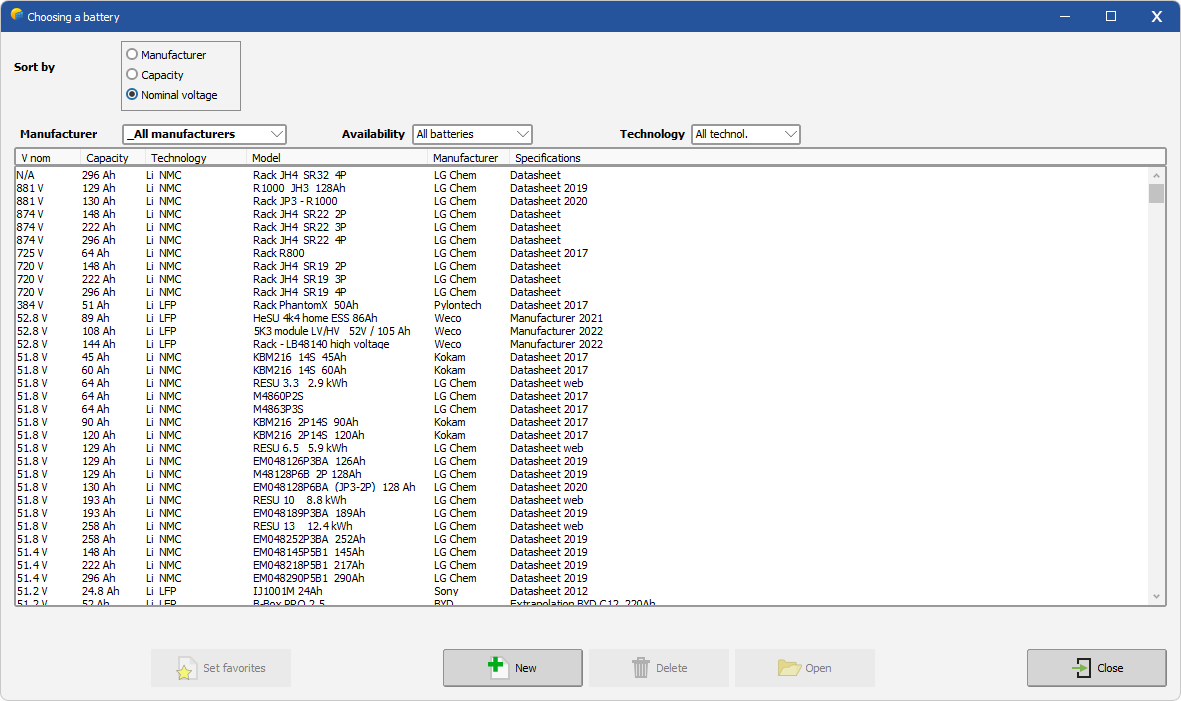|
<< Click to Display Table of Contents >> Batteries in the Database |
  
|
|
<< Click to Display Table of Contents >> Batteries in the Database |
  
|
The battery database is specifically suited for solar systems. It holds 2 main technologies: Lead-acid and Li-Ion batteries.
You can choose batteries by technology, by manufacturers, etc.
NB: Some models of the database are very old, sorry. And we had some difficulties to get detailed data for Li-Ion batteries.
If you want to use a model which is not in the database, and avail of detailed datasheets, we encourage you to share them with us, in order to enrich this database.

Lead-acid batteries: choice of the technology
Notice that though often used in small solar installations in holiday's houses or developing countries, the car batteries (often called "starting" batteries), are not best suited for a solar installation running conditions. Built to stay charged most of the time, and to produce a big starting current, they are not able to be cycled, have an important self-discharge, and their lifetime is limited to about 4-5 years and some hundreds of cycles.Their use is only economically justified in low-use installations (holiday houses or caravans).
For industrial or professional uses, the special solar batteries (with grids or tubular, open or sealed without maintenance), are more expensive at buying time. But due to their lifetime the real stored energy cost is often lower. Please consider the real cost of a battery as a function of the total energy you will store in this battery along its life (price of the kWh = price of the battery * total energy stored).
In warm countries, where the overcharging and evaporation risks are important, the open batteries may be preferred to the sealed maintenance free models, so that the user can always complete the electrolyte by distilled water.
However if the maintenance staff is not very competent, sealed batteries without maintenance should be used (with precautions concerning the overcharging).
Another key point is that the (big) batteries are often delivered without electrolyte, so that they should be filled with the acid on site. This requires some expertise and represents a danger. In some countries of for some transporters, the acid itself is considered as a dangerous good, which requires specific precautions, regulations, custom taxes, etc.